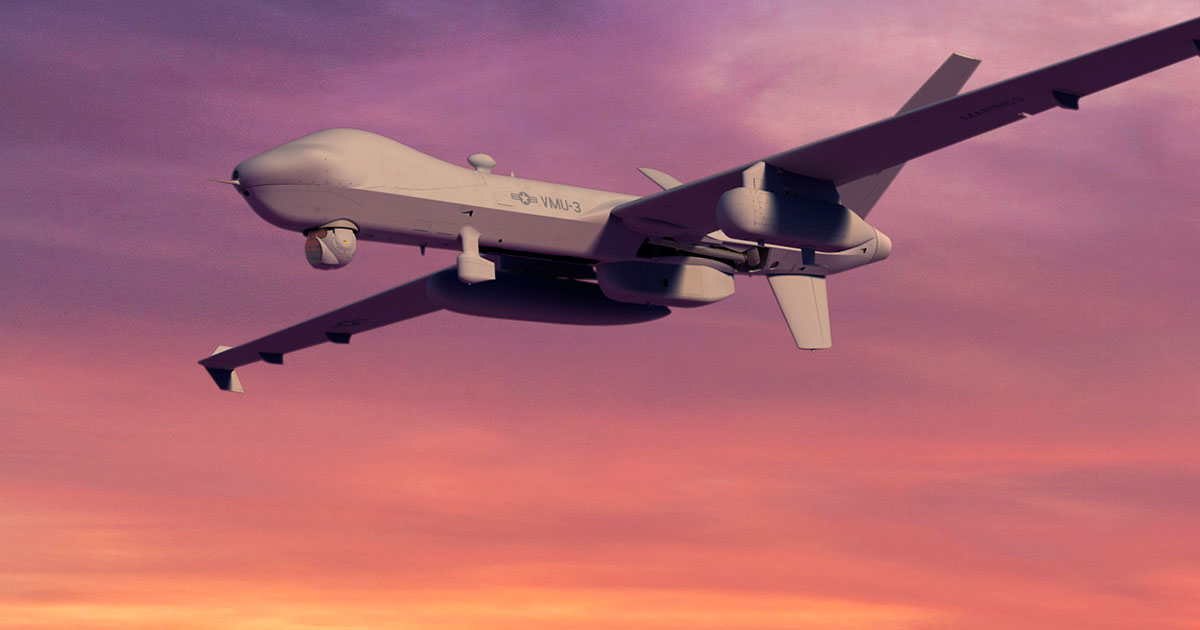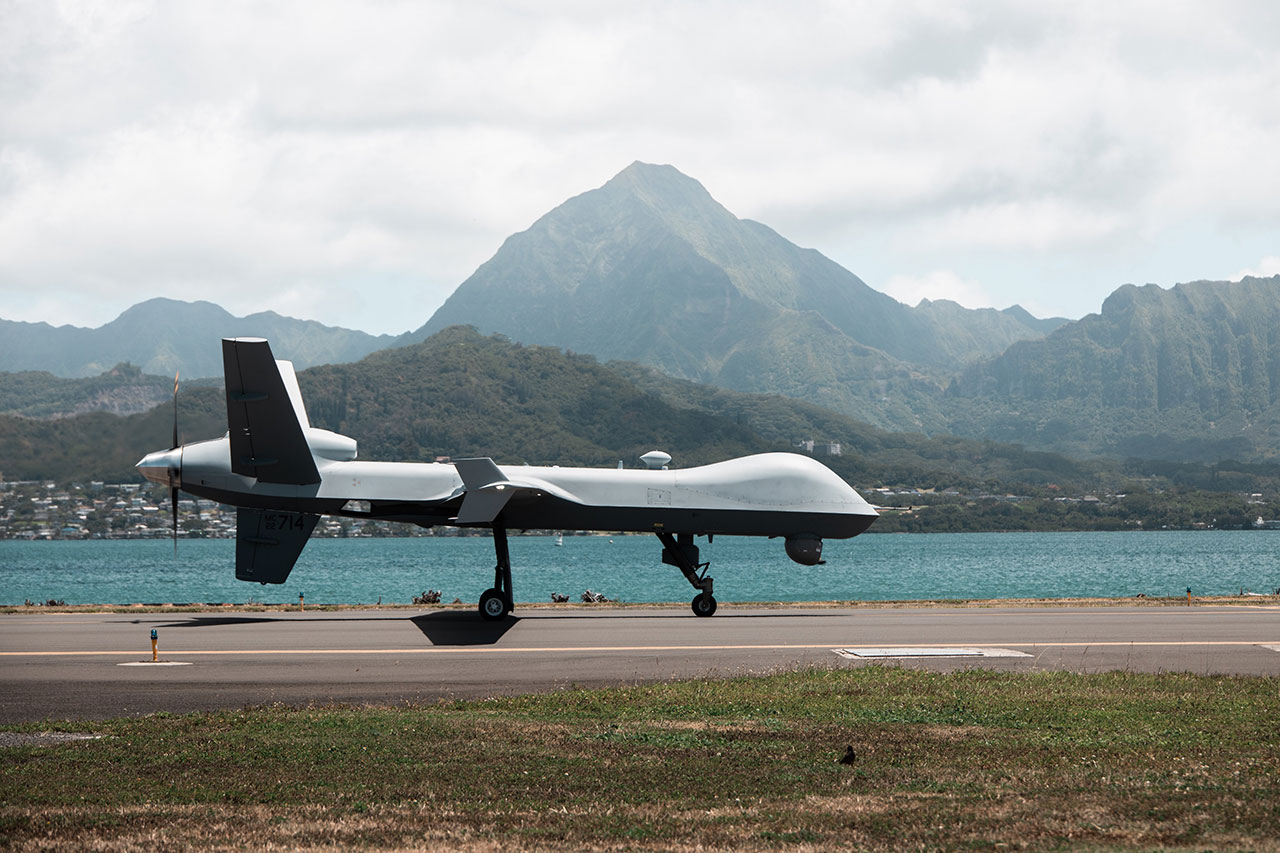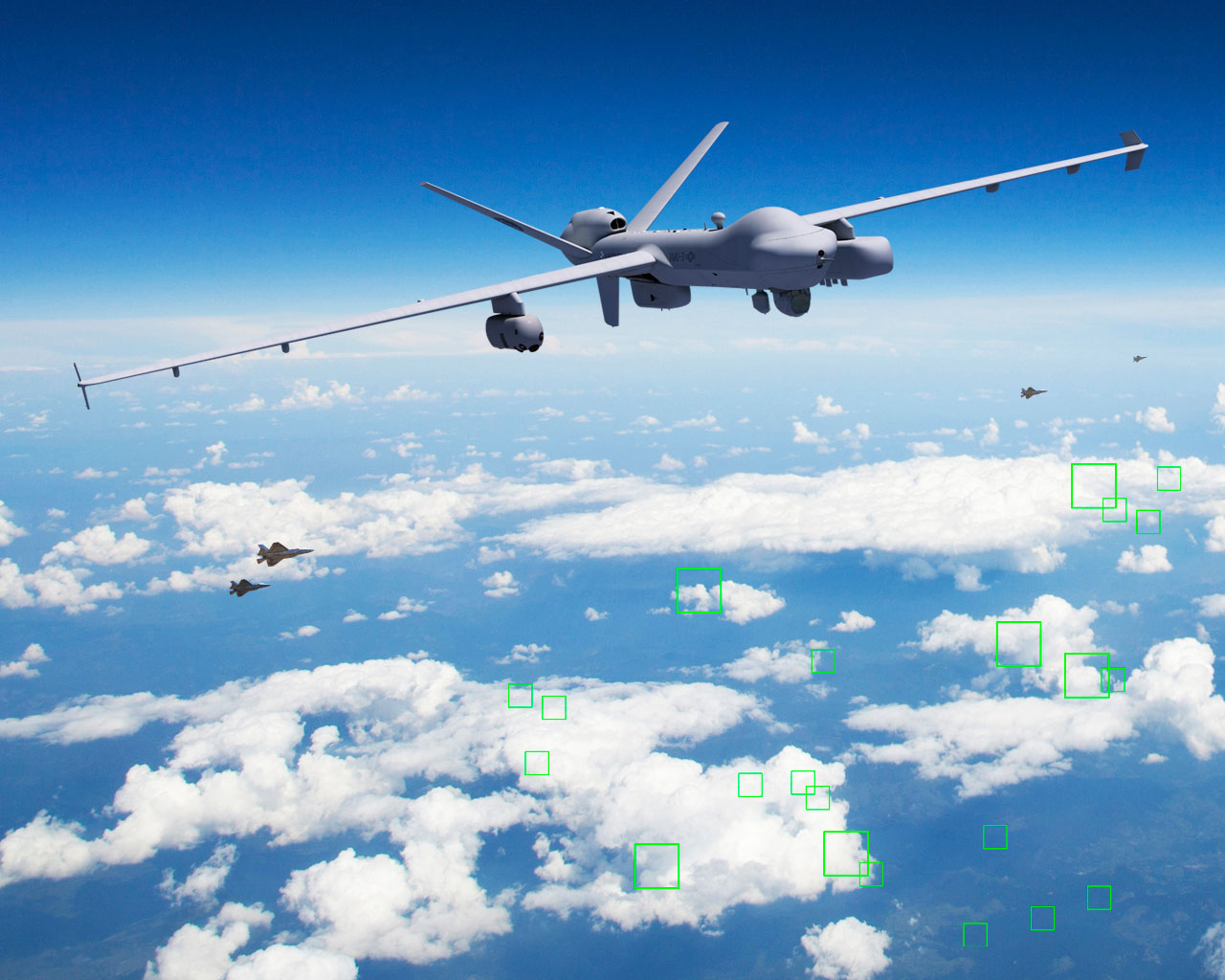
MQ-9A: Helping the Marine Corps Transform Expeditionary Warfare
The world isn't getting any safer and today's Marine Corps knows it must act swiftly to implement its new vision to keep emerging threats at bay.
As it ushers in the coming era of Expeditionary Advanced Base Operations, the Marines are turning to sophisticated unmanned aircraft to outmaneuver these threats. And deliveries are already well underway. Among these deliveries is a newly built MQ-9A Reaper aircraft from General Atomics Aeronautical Systems, Inc., part of a planned fleet of eight aircraft with the others set to follow in short order.
The MQ-9s are the cornerstone of the Marine Corps’ unmanned expeditionary concept, which takes the traditional Marine Air-Ground Task Force, sheds much of its former heavy equipment, and sends it into action as a lighter but highly lethal stand-in force that exploits new networks and new weapons with the same old Marine Corps audacity.
New concepts of operation
“Expeditionary Advanced Base Operations is a form of expeditionary warfare that involves the employment of mobile, low-signature, operationally relevant, and relatively easy to maintain and sustain naval expeditionary forces from a series of austere, temporary locations ashore or inshore within a contested or potentially contested maritime area in order to conduct sea denial, support sea control, or enable fleet sustainment,” as the Marines’ official doctrine describes it.
Translation: Marines race into and around an operating environment quickly with the ability to hide from detection but simultaneously watch for enemy units and, if necessary, reach out and touch them. Then the small units move again, keeping under the nose of the hostile forces, and repeat.
Marines have fought close to enemies in maritime or coastal environments before, but never has technology enabled so much sensing and strike capability to be wielded by such comparatively small and light formations. The Marines of the not-too-distant future might not only capture a small island but then very quickly start to use it as a base for their own anti-ship missions over big sections of the surrounding ocean.

MQ-9 is a key part of this strategy: the aircraft operate above Marine and Navy units, providing intelligence, surveillance, reconnaissance, targeting, communications, networking, and more. So a unit posted on that small remote island may not see a hostile warship out at sea with its own eyes. But the Reaper does, enabling those Marines to launch against the target via the sensor relay. In this way, small mobile detachments can have big effects on an air and naval battlefield.
Enter the Reaper ER
Long proven as the mainstay of the U.S. Air Force unmanned fleet as well as those of other advanced militaries, today’s Reaper is the result of many years of refinement. This family of remotely piloted aircraft has recorded more than 8 million flight hours, many of which were in combat; they are some of the most reliable aircraft anywhere in the world.
Specifically, the Marines are acquiring the MQ-9A Reaper-ER, for Extended Range, which maximizes the endurance of the platform. The aircraft is equipped with field-retrofittable capabilities, such as wing-borne fuel pods and reinforced landing gear, that extend the aircraft’s endurance to more than 30 hours while further increasing its operational flexibility.
The Reaper provides surveillance with full-motion video and a synthetic aperture radar that has moving target indication capabilities and a dedicated maritime mode. This means the Reaper can operate over any environment while supporting Marines or allied forces taking part in multi-domain operations – over land, then over coastal areas, then over open ocean and everything in between.
MQ-9A ER is equipped with a fault-tolerant flight control system and a triple-redundant avionics system architecture. Designed for long endurance, it is meticulously engineered to meet and exceed manned aircraft reliability standards. The aircraft’s extremely high operational availability means it will be ready when Marines need it to launch, and it will stay on station throughout its mission.
Ever-growing capability
A growing array of payloads only adds to this flexibility. Specialized surveillance or intelligence gathering, communications relay, electronic attack, and other capabilities all become quickly available via pods installed on the Reaper’s various wing or fuselage hardpoints.

The aircraft also can take on new resilience with a Self-Protect Pod, which adds threat detection and countermeasures just like those aboard a fourth-generation fighter aircraft. A Reaper can sense surface-to-air threats and release chaff or flares to spoof an incoming missile.
The aircraft also is a well-proven platform for the release of ordnance, giving the Marine Corps a new organic form of air support to integrate into its Expeditionary Advanced Basing Operations. Imagine a small island where a detachment of Marines was operating with Reaper high overhead patrolling the surrounding waters. The aircraft’s crew at a Ground Control Station detects the boats of hostile scouts probing the area. Onboard weapons would mean the Reaper could act quickly and decisively to neutralize that threat.
As a remotely operated aircraft, the Reaper offers several other advantages in these types of scenarios: its advanced support systems and networking mean that it can be flown from anywhere. The Marines on the hypothetical island might control it in this scenario, or a team thousands of miles away might be in control via satellite. They could even hand off control from one to the other.
In no event, however, is any human crew operating the aircraft ever in any danger. What’s more, that also means the Marine Corps or other allied units don’t need to arrange for search and rescue support – no helicopter needs to stand by in case a friendly pilot bails out, keeping more human crews out of harm’s way and further reducing the costs involved.
The Marines’ new approach to expeditionary operations is quickly unfolding: the new Reaper aircraft are beginning operations with Unmanned Aerial Vehicle Squadron 3, part of Marine Aircraft Group 24 at the Marine Corps Air Station at Kaneohe Bay, Hawaii. As more of them follow, builder GA-ASI will continue to support the development of new warfighting capabilities.
“We look forward to the rapid deployment of these MQ-9A ERs for our USMC customer,” said GA-ASI Vice President of DoD Strategic Development Patrick Shortsleeve. “This capability will be a key ISR contributor for the Marine Air-Ground Task Force – and ultimately for U.S. Indo-Pacific Command – as we pace ourselves to outmaneuver our adversaries.”